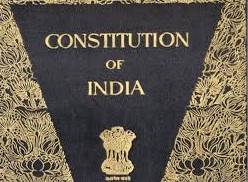India became a free nation on 15th August 1947 (also known as Independence Day), and when its constitution (drafted by Dr. B. R. Ambedkar) came into effect on 26th January 1950 (also known as Republic Day), it became sovereign, democratic and republic. India became republic on this historic day which is heralded by Dr. B.R. Ambedkar with the unfurling of Indian flag & salute of 21 guns. Dr. Rajendra Prasad took an oath as the first
President of India.


Sovereign India: It means absolute independence of a state, totally free from any other power: external or Internal. A country cannot have its constitution without being sovereign. India’s constitution introduced on
26th November 1949 (also known as Constitution Day).A free country to frame its own polices.
Democratic:
Rule of citizens, when people choose representatives. For example: During Elections, where people cast their vote to choose the government.
Republic:
Rule of Law, when people have to abide by the rule of law. For example: After election. Any country that follows the rules provided by a constitution is called a Republic.
Preamble (We, The people of India) also enacted on this day. Preamble describes India sovereign, socialist, secular & democratic republic. It is the introduction part of the constitution.
Then some changes made in the Indian Constitution, under 42nd amendment Act 1976 enacted during the emergency by the Indian Nation congress, led by Indira Gandhi. We also call it
‘Mini Constitution’ as it made the large number of revision in the Indian Constitution. This amendment impacted many aspects of the constitution like: